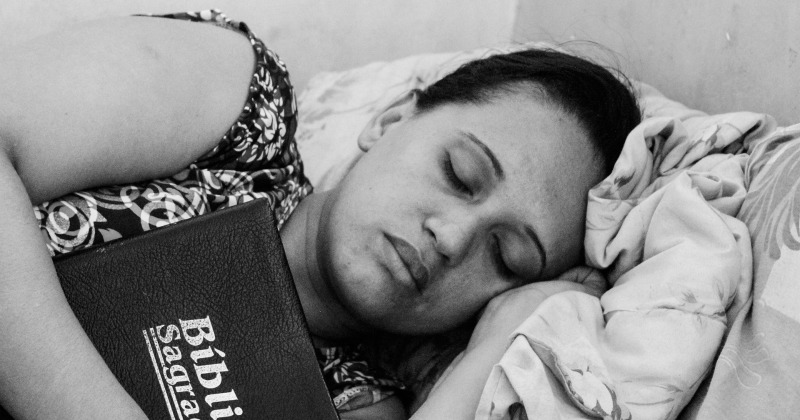


Of course, REM deprivation, and the subsequent rebound, is common outside the lab. Subjects who were only getting about 25 minutes of REM sleep rated the quality of their dreams between nine and eight on a nine-point scale (one being dull, nine being dynamite). Nielsen also found that dream intensity increased with REM deprivation. In a 2005 study published in Sleep, Nielsen showed that losing 30 minutes of REM one night can lead to a 35 percent REM increase the next night-subjects jumped from 74 minutes of REM to a rebound of 100 minutes. Of course there is non-REM rebound as well, but the brain gives priority to the slow-wave sleep and then to REM, suggesting that the states are independent of each other.


"As soon as you start to rob them of REM, the pressure for them to go back into REM starts to build." Sometimes Nielsen will have to wake them 40 times in one night because they go directly into REM as soon as they are asleep. "We follow the tracing and then when we see moving into REM, we wake them up," says psychologist Tore Nielsen, director of the Dream and Nightmare Lab at the Sacré-Coeur Hospital in Montreal. The only way scientists can study REM deprivation is by torturous sleep deprivation. As the night progresses, however, non-REM stages shorten and the REM periods grow, giving us a 40-minute dreamscape just before waking. A total non-REM–REM cycle is 90 minutes this pattern repeats about five times over the course of a night. Only after 70 minutes of non-REM sleep do we experience our first period of REM, and it lasts only five minutes. Then the brain practically shuts off in stages three and four and shifts into slow-wave sleep, where heart and breathing rates drop dramatically. In stage two the brain slows with only a few bursts of activity. Stage one of non-REM is the nodding off period where one is between sleeping and waking it's sometimes punctuated with a sensation of falling into a hole. Sleep is divided into REM and four stages of non-REM each has a distinct brain wave frequency. Yet, at the same time, our muscles go slack and we lie paralyzed-a toe might wiggle, but essentially we can't move, as if our brain is protecting our bodies from acting out the stories we dream. In this state we dream the most and our brain activity eerily resembles that of waking life. REM refers to "rapid eye movement," the darting of the eyes under closed lids. "When someone is sleep deprived we see greater sleep intensity, meaning greater brain activity during sleep dreaming is definitely increased and likely more vivid," says neurologist Mark Mahowald of the University of Minnesota and director of the Minnesota Regional Sleep Disorders Center in Minneapolis. "Nature's soft nurse," as Shakespeare called sleep, isn't so soft after all. Miss a few from lack of sleep and the brain keeps score, forcing payback soon after eyelids close.
NOT GETTING DEEP SLEEP FULL
If she did sleep a full night, her dreams boomeranged, becoming so vivid that she felt like she wasn't sleeping at all.ĭreams are amazingly persistent. Salem, a new mother, had been breast-feeding her daughter for five months before the croc-attack dream, living on four hours of sleep a night. That's what my dreams were like-vivid, crazy and active," she says. "I imagine that's what it's like when you're on heroin.
NOT GETTING DEEP SLEEP FREE
In a panic, she managed to knock out the crocodile and free herself. About three years ago Eva Salem got into some trouble with a crocodile.


 0 kommentar(er)
0 kommentar(er)
